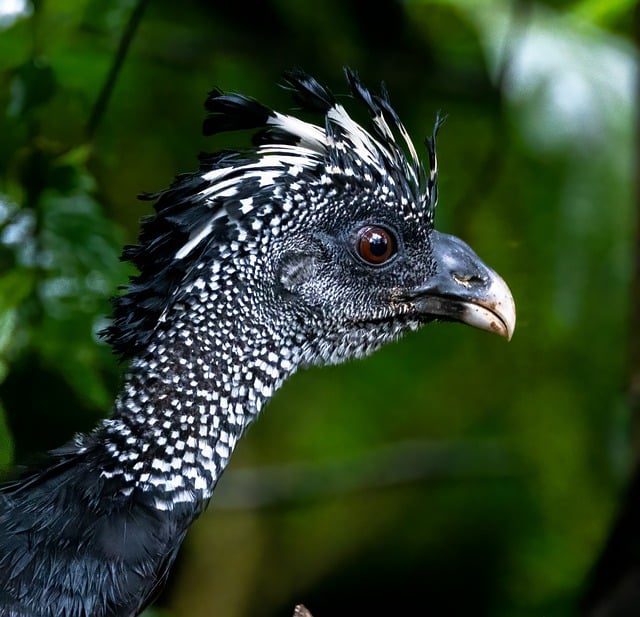We’ve all dreamed about escaping to the Galapagos Islands. But the cost and logistics are a bit too much. In such a case, the next best option is the “poor man’s Galapagos” located in Peru, the Ballestas Islands.
Ballestas Islands are a small, uninhabited archipelago where you can witness a lot of marine life and nature, all at a fraction of the cost of a Galapagos trip. Let’s get right to how you can plan and make the best of the “poor man’s Galapagos” trip! A super comprehensive guide to the Ballestas Islands.

The Ballestas Islands are a group of small, rocky islands in the Paracas National Reserve. It is approximately 24 kilometers off the coast of Paracas in the Ica region of southern Peru. These islands only cover an area of just 0.12 square kilometers and are full of dramatic, craggy rock formations.
The islands’ location within the Humboldt Current. It is a cold, nutrient-rich ocean current that flows along the western coast of South America. This is the main reason for the abundance of marine life found in this region.
Humboldt Current transports a steady supply of plankton and other small organisms, a rich and diverse food source for many species in the Ballestas Islands.
Planning your first trip to Brazil? Take an unforgettable road trip through five vibrant capitals: São Paulo, Rio, Brasília, Salvador, and Curitiba. Experience unique cultures, delicious food, and stunning landscapes.
The Ballestas Islands are known for their incredible biodiversity. Some of the most notable inhabitants of these islands include:

One of the main draws for visitors to the Ballestas Islands is the opportunity to see the Humboldt penguin. It is a species found primarily in the coastal areas of Peru and Chile. It is one of the few places where these seabirds can be seen in their natural habitats. Humboldt penguins are one of the northernmost penguin species in the world.
Explore Arequipa, Peru! Visit Santa Catalina Monastery, Plaza de Armas, Colca Canyon, hike El Misti volcano, and savor local cuisine.

The Ballestas Islands are home to large colonies of both South American sea lions and Peruvian fur seals. Seeing these marine mammals in their natural environment is a truly unforgettable experience.

You’ll also find sea birds like the guanay guano bird and the vibrant blue-footed booby on the islands. These birds and countless other species nest and breed on the islands in massive colonies.

While the islands are best known for their marine mammals and birds, visitors may also be lucky enough to spot creatures such as humpback whales, dolphins, various colorful sea stars, and other marine invertebrates.

The Ballestas Islands can only be visited via organized boat tours. Arriving on the islands themselves is prohibited to protect the delicate ecosystem. These tours typically depart from the nearby town of Paracas, which is easily accessible from other major destinations in Peru.
The tour itinerary changes according to each package and company. Typically, the tour includes a beautiful boat ride to the islands and an hour-long cruise around the archipelago. You’ll also visit a Nazca Line from 200 BCE that belonged to the Paracas culture. It is called the El Candelabro.
Once you reach the island, you’ll float around for a while and get a closer look at the wildlife and dramatic geographic features without getting off the boat. The boat might get quite close to the shoreline, so be prepared to get a bit wet.

You can also see the Candelabra Geoglyph on your way to the Ballestas Islands. This massive, three-pronged symbol is carved into the soil of the Paracas Peninsula. It is also 150 meters in height.
The origins and purpose of the Candelabra Geoglyph have long been a source of mystery. Some of the theories include it being a navigational aid for ancient seafarers to a representation of a hallucinogenic plant.
Connecting it to the famous Nazca Lines, the Candelabra Geoglyph adds an extra layer of intrigue to your Ballestas Islands adventure.
The Ballestas Islands and the surrounding Paracas National Reserve are protected natural areas. The area has strict regulations and conservation efforts for the continued well-being of the delicate ecosystem.
Visitors are not permitted to set foot on the islands themselves. The tour operators are bound by strict guidelines to minimize their impact on the environment. The best part of visiting Ballestas Island is that we get to experience it without compromising the natural balance of its wildlife and habitat.
| Ballestas Islands | Galapagos Islands |
|---|---|
| Located off the southern coast of Peru, near Paracas. | Located over 600 miles off the coast of Ecuador. |
| Part of the Guano Islands, Islets, and Capes National Reserve System. | Consists of 19 main islands and numerous smaller inlets. |
| Known for their abundant marine fauna and bird life. | A double World Heritage site for both land and marine ecosystems. Known for their unparalleled biodiversity, with many species found nowhere else on Earth. |
| A strictly protected sanctuary for various marine species, including sea lions, penguins, and seabirds. | Strictly protected to preserve the unique flora and fauna. |
| Ideal for travelers with limited time or budget seeking a wildlife-rich experience. | Offers a premium and immersive wildlife experience but can be more expensive and time-consuming to visit. |
The Ballestas Islands are a great alternative to the Galapagos. It is budget-friendly, and you get to experience the biodiversity of Peru’s coastal regions up close.
This “Poor Man’s Galapagos” has playful sea lions, seabirds, geological formations, the mysterious Candelabra Geoglyph, and more. So, it is not poor in experience. It is an experience like this that makes Peru so special. So, what are you waiting for? Start planning your Ballestas Islands adventure!
So, what are you waiting for? Start planning your Ballestas Islands adventure today and discover the hidden gems that make this corner of Peru so truly special.
Counter
101 Countries • 1432 Cities